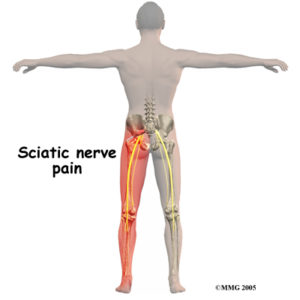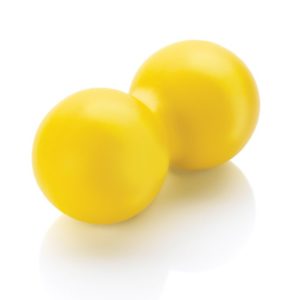 A general rule in treating sciatic problems is that each location needs to be resolved independently. And it can take time. There is no magic pill or treatment that will remedy these issues. No doctor can do it for you. Your active participation is required for a true and lasting resolution.
A general rule in treating sciatic problems is that each location needs to be resolved independently. And it can take time. There is no magic pill or treatment that will remedy these issues. No doctor can do it for you. Your active participation is required for a true and lasting resolution.
For my part I start off addressing what’s symptomatic, with the understanding that if someone is experiencing pain from their lower back to their toe, it generally its going to be slower progress than if someone just has it in their gluteal area or just down their leg. The resolution below the knee tends to be much simpler as the nerve has a lot less power there. Sometime we resolve one area only to discover extra attention is needed further down stream.
Along with receiving hands-on massage by a qualified practitioner, the following self-care practices are recommended for addressing sciatic issues:
Self Massage:
Self-massage on a regular basis is an essential component of recovery. It calms the nerve and relaxes the muscles. And it’s very simple.
There are many variations on self-massage but my favorite is with the tennis ball. I really like the Dual Point Massager by SKLZ that can be used just like the tennis ball but with more versatility. Basically, you position the Accupoint or tennis ball between your body and a relatively hard surface, like a chair or the floor. When sitting or lying down, place the ball under the area of discomfort and apply the right amount of pressure. The sensation should be strong and satisfying, a “good pain” feeling. If you are wincing or gritting your teeth, you need to back off. Once you have adjusted yourself to achieve the right pressure, relax as much as possible, breath deeply and wait for the sensation to fade. Then move to the next area and repeat.
that can be used just like the tennis ball but with more versatility. Basically, you position the Accupoint or tennis ball between your body and a relatively hard surface, like a chair or the floor. When sitting or lying down, place the ball under the area of discomfort and apply the right amount of pressure. The sensation should be strong and satisfying, a “good pain” feeling. If you are wincing or gritting your teeth, you need to back off. Once you have adjusted yourself to achieve the right pressure, relax as much as possible, breath deeply and wait for the sensation to fade. Then move to the next area and repeat.
Biomechanics:
Biomechanics is another vital component for addressing these issues. Especially for those who sit a lot, the use of correct sitting posture is essential to reducing sciatic symptoms. If you are one of those people who sits a lot for work or travel, my video “The Best Way to Sit” is a must see. Take 3 minutes now to view this piece and get into your best sitting posture right away.
 The sciatic nerve can also become compressed while walking, so we must pay attention here as well. The most important biomechanic adjustment to make is to extend the area between ribs and pelvic girdle. To do this first locate the top of your hip/pelvic bone and then locate the ribs closest to that pelvic bone. Feel how much you can elongate the area in between these two bones. Then maintain this elongation as you walk. This one adjustment will go a long way toward taking pressure off the sciatic nerve while relieving pain and discomfort. Our next blog will offer more details on the best way to walk to address sciatic issues and more, so stay tuned.
The sciatic nerve can also become compressed while walking, so we must pay attention here as well. The most important biomechanic adjustment to make is to extend the area between ribs and pelvic girdle. To do this first locate the top of your hip/pelvic bone and then locate the ribs closest to that pelvic bone. Feel how much you can elongate the area in between these two bones. Then maintain this elongation as you walk. This one adjustment will go a long way toward taking pressure off the sciatic nerve while relieving pain and discomfort. Our next blog will offer more details on the best way to walk to address sciatic issues and more, so stay tuned.
Stretching:
In the case of sciatic issues, stretching is important, but is used mainly for prevention. My Flexibility Training routine is an incredible tool for anyone who wants to be proactive in preventing these kinds of problems in the future. The Forward Bend Set in that Flexibility Training program is also great for a targeted, quick and easy routine that helps prevent sciatic problems. Be sure to bend your knees going into and coming out of the forward bend. Bending the knees will focus the stretch and the movement into your hips and lower back instead of concentrating it on the hamstring.
Once the nerve is aggravated, however, stretching can be counter-indicated. In this case, stretching should only go to the level where you barely feel it. Deep stretches in the affected area(s) are strongly discouraged and may exacerbate the problem.
All in all, most sciatic problems can be resolved effectively and permanently without invasive procedures or long-term use of medication. If you are experiencing sciatic pain or discomfort, we can help. Contact us to schedule an appointment at our San Diego or California Central Coast clinic today. Be vigilant with your seated position, work out painful areas with the tennis ball and start stretching today to avoid problems in the future. Your back and legs will feel better forever.
